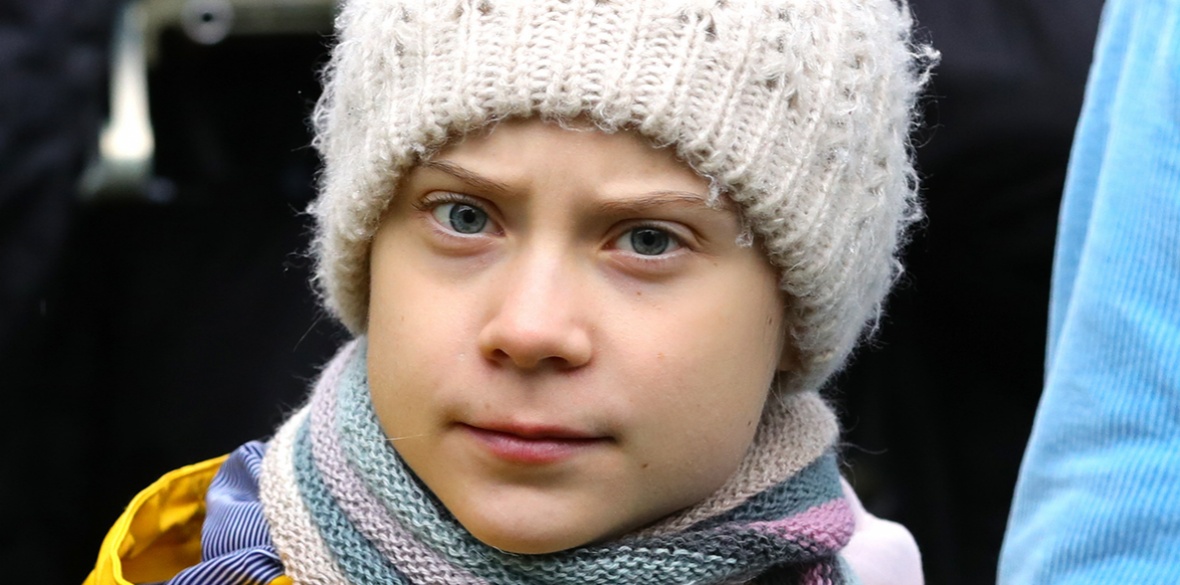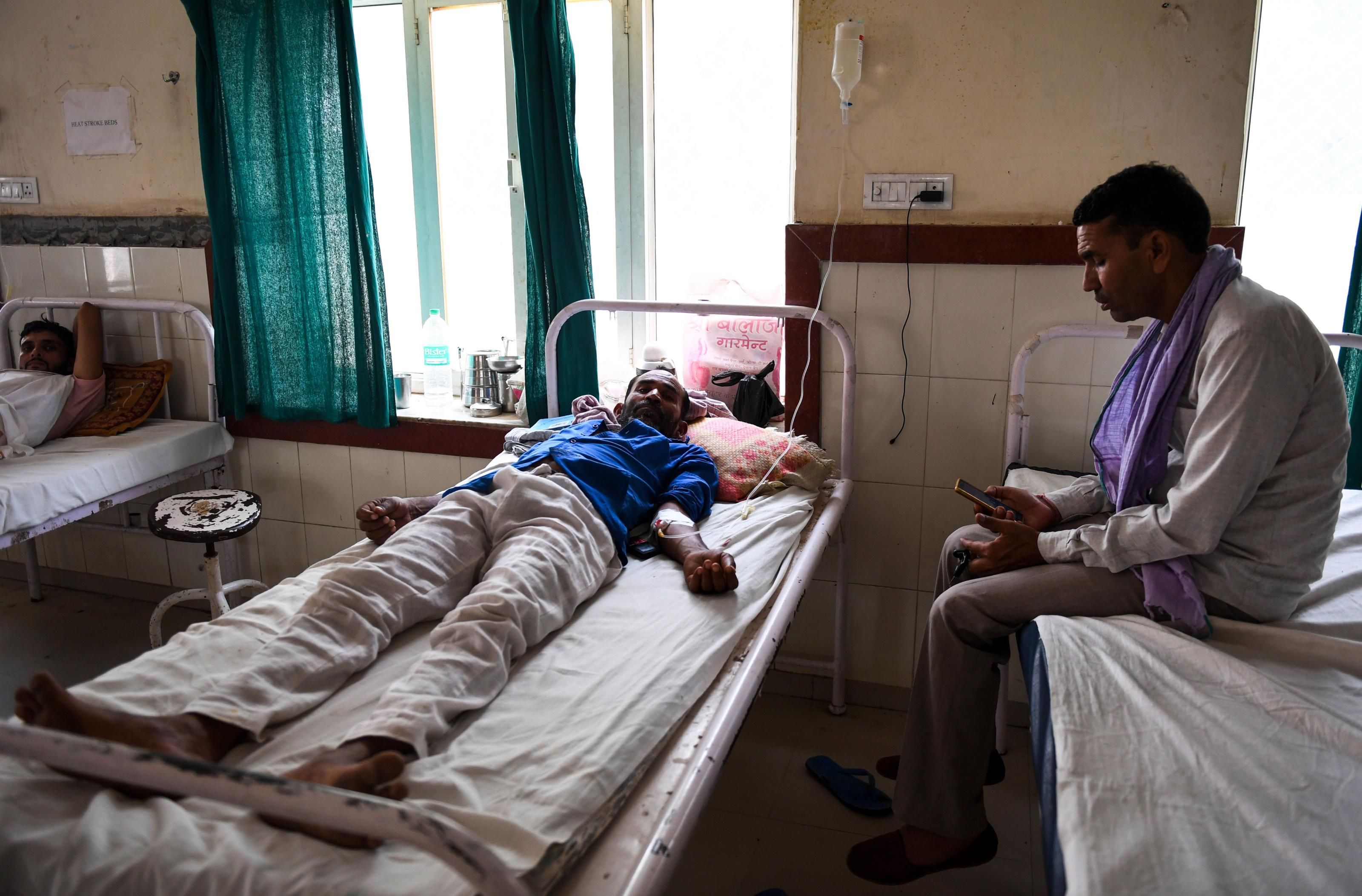Photo: Socialized Medicine: Iraq veteran Joshua Pitcher works with an occupational therapist at the James A. Haley Veterans Hospital in Tampa, Florida. The veterans' health system in the U.S. is funded and operated by the government.
By Martha Sonnenberg
New Politics
Summer 2021
Acute social disturbances and crises, because they change the nature of everyday human experience, often lead to changes in social and political consciousness. Following the ravages of the Black Plague in the 14th century (1347–1350), people across Western Europe saw the inability of priests to intervene for their protection. Old certainties and beliefs about religious orthodoxies were overturned.
People lost faith in the status quo, and this led, eventually, to a more humanistic and secular worldview, typified by the Renaissance. Class relationships were also upended. Across the continent, there were many political rebellions, the most well-known being the Ciompi Revolt of 1378, in Florence. The Ciompi were wool carders and weavers, but the name referred generically to all the poor workers and artisans whose successful uprising enabled them to take over the Florentine government for four years.1
Today, the overwhelming morbidity and mortality of the COVID-19 pandemic, with its consequent social and economic devastation, has similarly dispelled the illusion of American exceptionalism and has revealed the inability of the current capitalist system to protect people’s health, livelihood, and their right to a fulfilling life. For the first time in decades, the word “socialism” enjoys new popularity. Younger activists, in particular, are showing a positive orientation to socialism.
Most dramatically and viscerally, the pandemic has exposed the failures of the American healthcare system: its inequity, its crippling bureaucracy, its fragmented and chaotic use of resources, its abuse of its own healthcare providers and workers, its inability to provide care to those who most need it, and its complete and dependent cohabitation with the insurance industry.
It is not surprising, therefore, that despite the many years of propaganda against “socialized medicine,” the American public, and healthcare providers, have become increasingly cognizant of these failures and consequently more open to options they might previously have rejected, including Medicare for All, or universal health insurance. Even the ordinarily apolitical New England Journal of Medicine published an article that discussed Medicare for All as a reasonable option.2 There are distinctions between universal health insurance and Medicare for All, but for the purposes of this article, I use the terms interchangeably.
The progressive left has seen this change in thinking as an opening to promote and build a movement for universal health insurance. For instance, an article published by the Sanders Institute—a think tank formed in conjunction with Senator Bernie Sanders’ 2016 presidential run—declared: “Medicare for All can be the health wing of the broader justice movement.… In demanding guaranteed healthcare through Medicare for All, we are demanding a more just and humane society.”3 This same impetus can be seen in a 2019 article published in Jacobin, in which Benjamin Fong and Christie Offenbacher write: “Medicare for All is more than just a matter of fixing our broken healthcare system. And it’s more than just a good policy. It’s the perfect fight to pick with our ruling class—one that can unlock the power of a mass working-class movement in the United States.”4
Of course, there is no question that universal health insurance would be an enormous improvement in the American healthcare system—“Everybody in, nobody out,” in the words of the late Dr. Quentin Young, a longtime supporter of universal health insurance.5 It would cover every resident in the United States for all medically necessary services, including physicians, hospital care, long-term care, prescriptions, and mental, dental, and vision care. It would go a long way toward eliminating the racial, ethnic, and geographic inequities in access to healthcare. It would eliminate the interference of the insurance industry in medical care that so often causes conflicts between medical ethics and the profit-oriented demands of the insurance industry or corporate employers. And by separating health insurance from employment, universal health insurance would eliminate the premiums and out-of-pocket costs inherent in employer-sponsored plans.6 It would enable unemployed workers full access to healthcare and enable workers to leave jobs without fear of losing health insurance.
It is precisely because there has been such a change in the public’s understanding of the failures of the current healthcare system that we now see the potential for the left to expand its own vision of the changes we actually need in healthcare, beyond universal health insurance. Indeed, we have an opportunity to look more deeply into what socialized medicine might actually be, and how it might be realized.
The Limits of Medicare for All
Medicare for All is socialized health insurance—a unified system of public financing—and it does not pretend to be anything other than equitable access to care; it maintains private clinics, private physician practices, and private hospitals.
So while Medicare for All may be a necessary first step toward change in healthcare, it cannot challenge the quality, or current culture and class basis, of the way contemporary healthcare is delivered. On its own, Medicare for All is not sufficient to bring about the transformational creation of a healthcare system that can truly provide compassionate and quality care for patients, meaningful and safe work for healthcare workers, and a national public health service that can provide a safe and healthy environment for society as a whole.
When we look at the quality and the culture of the current healthcare system, we begin to appreciate the significance of what Medicare for All does not address. First, it misses the class-based medical hierarchy of healthcare, wherein the corporate employers are at the top, controlling the infrastructure and management of its institutions. Below the corporate level are the physicians, answerable to their employers but leading the delivery of care, primarily by issuing orders to be filled by nurses. Alongside, and sometimes below, the nurses are the support caregivers, the physical therapists, the nutritionists, the case managers, and various technicians. And at the bottom are the transport workers, kitchen staff, and custodial workers. This hierarchy leads to fragmentation of patient care as each group sees itself as separate from the others, with no need to coordinate care or recognize and communicate observed problems. Patients suffer from this fragmented and hierarchical system: it can lead to delays in care and services, to adverse effects from multiple medications, and to other errors in treatment.
Secondly, Medicare for All misses the effects that the pressures of privatized and profit-driven care have on healthcare workers at all levels of the hierarchy. From doctors to custodial workers, increasing numbers of people feel demoralized, disrespected, and devalued, leading to an increase in burnout, chemical dependency, depression, and suicide.
Thirdly, Medicare for All does not address the wide variability in the quality of care provided by individual doctors. While many physicians conscientiously practice evidence-based medicine, others maintain old habits of care that may be outdated, insufficient, or outright dangerous, or get their information about medications from drug company salespeople’s promotional pitches and advertisements, rather than from peer-reviewed research.
And finally, Medicare for All cannot address health issues beyond the purview of individual care—those more collective issues that affect the health of society as a whole, including issues of air quality, water safety, environmental protection, energy sourcing, transportation, food safety, immunization practices, problems of chemical dependency, pandemic preparation, and cohesive and strategic implementation of pandemic mitigation. The current public health system is weakened both by chronic underfunding and by the fragmentation of its multiple departments, agencies, and services. This conglomeration of entities provides no consistent public health infrastructure, and no consistent policy or messaging.
All of these issues must be addressed if we are to achieve new possibilities for healthcare. The sole focus on Medicare for All narrows our thinking about what we, as socialists, might envision as socialized healthcare.
What Is Socialized Medicine?
Conservatives have a long history of attacking universal health insurance as socialized medicine. This attack has deep roots in the United States. In 1945, the American Medical Association mounted strong opposition to the national health insurance plan proposed by President Harry S. Truman, despite his assurance that healthcare delivery would remain in the private sector. In response, AMA president Dr. Morris Fishbein said:
This is the first step toward the regimentation of utilities, of industry, of finance, and eventually of labor itself. This is the kind of regimentation that led to totalitarianism in Germany … no one will ever convince the physicians of America that the bill is not socialized medicine.7
A few years later, the AMA was joined by McCarthy-era anti-communists. The threat of German totalitarianism was supplanted by the threat of Soviet-style Stalinism as the subject of fear-mongering; red-baiters quickly suffocated any mention of national health insurance. Today, such condemnation of national health insurance as socialized medicine has become a mantra for the right, led most recently by Donald Trump.
The left, too, has sometimes associated Medicare for All with socialism. Fong and Offenbacher, in the Jacobin article referenced above, equate Medicare for All with “socialist policy,” further stating that the “Medicare for All system will be all the evidence we need to convince millions of people in America that democratic socialist politics is not only possible but also materially beneficial.”8
Thus, both the right and the left have subscribed to the conventional notion of socialized medicine, referring to government or state ownership and control of access to care, control of hospitals and care facilities, as well as the employment of physicians and other healthcare workers. The British National Health Service (NHS) is frequently cited as an example of socialized medicine.
I am proposing that we begin to look at socialized medicine not from this conventional perspective, but rather from that first articulated by scholar-activist Hal Draper in his 1966 article “The Two Souls of Socialism.”9 Draper famously viewed socialism in terms of “socialism from above,” and “socialism from below.” Socialism from above involved the imposition of plans, programs, positions, and policies to be handed down to (presumably) grateful masses, and over which those masses had no control. Socialism from below, on the other hand, involved social changes, plans, and policies that were realized through the agency and self-activity of those affected by those changes. To engage in socialism from below was for people to be actors in the making of their own history.
In terms of healthcare systems, socialized medicine from above would be consistent with Medicare for All (or the British NHS), as a primarily financial plan dispensed from above for the benefit of those below. Even when we consider the possibility of a unified, nationalized, and comprehensive public health system that addresses the collective health issues mentioned above, most current models (e.g., those in Denmark, Italy, and Finland) are based on control from above. No matter how beneficial they may be, all these healthcare systems hand down plans and policies from experts, managers, administrators, and bureaucrats to the people affected by these plans and policies. Journalist Laurie Garrett, in her comprehensive look at global public health systems, articulates the essence of socialized medicine from above, presenting it in its most benevolent form:
Public health is a bond—a trust … between a government and its people. The society at large entrusts its government to oversee and protect the collective good health. And in return, individuals agree to cooperate by providing tax monies, accepting vaccines, and abiding by the rules and guidelines laid out by government public health leaders.10
Envisioning Socialized Medicine from Below
Socialized medicine from below cannot be laid out as a definitive program. It must develop as a process over time, as people making change begin to feel empowered to create that socialized medicine. We can begin to envision how socialized medicine from below might evolve if we look at how people are surviving and living their lives in these times. Then we will also see the possibilities of liberation that are often hidden in the cultural crevices of their lives.
Community Activism
We can look to history for some clues about what socialized medicine from below might entail. Without accepting the authoritarian aspects of Maoism, we can appreciate the significance of China’s “barefoot doctors.” In the 1960s, China’s rural areas still had almost no medical care. The barefoot doctors were peasants, chosen by their fellow peasant farmers, to get three months of basic medical and paramedical training, after which they would go into rural areas with their own understanding of how peasants lived their lives. At times working alongside physicians, the barefoot doctors would provide basic medical services, preventive care, immunizations, sanitation, and health education.11 They educated their patients on these subjects, but they also educated themselves about the conditions of rural life and consequently played an important part in the modernization of healthcare in rural China.
Another historical example is the Black Panther Party’s programs of free breakfasts for children and free health clinics, which began in the late sixties. The free breakfasts addressed the nutritional needs of the community, while the free clinics brought preventive care and screening for genetic disorders such as sickle cell anemia, prevalent in their communities. Community activists, alongside nurses, doctors, and medical students, staffed the free clinics and empowered other members of the communities to provide these services. Significantly, these free clinics had roots in the civil rights movement, and gave rise to the Medical Committee for Human Rights. The Black Panthers brought to their communities a working model of how self-determined activity could advance public health.12
Of course, the power of community-centered activism has more contemporary examples, too. After Hurricane Sandy struck the U.S. Atlantic coast in 2012, community partnerships emerged to address health issues of low-income and immigrant workers. In speaking of her experience working with these partnerships, Dr. Sherry Baron said, “Focusing on the community and developing workplace exposure reduction programs with community partnership has been very successful in reaching a whole group of workers that we haven’t … reached in the past.”13
My own experience as a physician during the height of the AIDS epidemic was that initiatives undertaken by patients from the gay community had a significant impact on their care and on the subsequent behavior of doctors and hospitals. First of all, the patients corrected doctors who, reproducing an idea then conventional among the medical community, listed homosexuality as a medical problem. It was not a “problem” their patients explained; it was their life. They also demanded that they be referred to not as “victims” of AIDS, but rather as “people with AIDS,” thus asserting their agency in their relationship to the healthcare system. Further, patients’ loved ones refused to accept death as separate from life by demanding that the medical environment help them orchestrate a “good death,” insisting that hospitals allow friends, lovers, and family to be present at the bedside. This opened the door for the medical community to re-examine how it dealt with death.
The COVID-19 pandemic has prompted more examples of grassroots efforts to create new methods of bringing healthcare to communities. For instance, in New York, the Bronx Rising Initiative empowered the healthier members of a neighborhood or community to make sure that the elderly, the disabled, and the immune-compromised got COVID-19 vaccine appointments. These community initiatives thus created their own solutions to the deficiencies in the government’s vaccination implementation plan.14 These community initiatives have pushed the United States government to address the inequities of vaccine distribution by developing ways to bring the vaccines, and the administration of vaccines, to underserved communities. ...Read More
Martha Sonnenberg is a retired physician who specialized in Infectious Diseases. She is a former Chief Medical Officer and a consultant in issues of hospital quality and safety.



